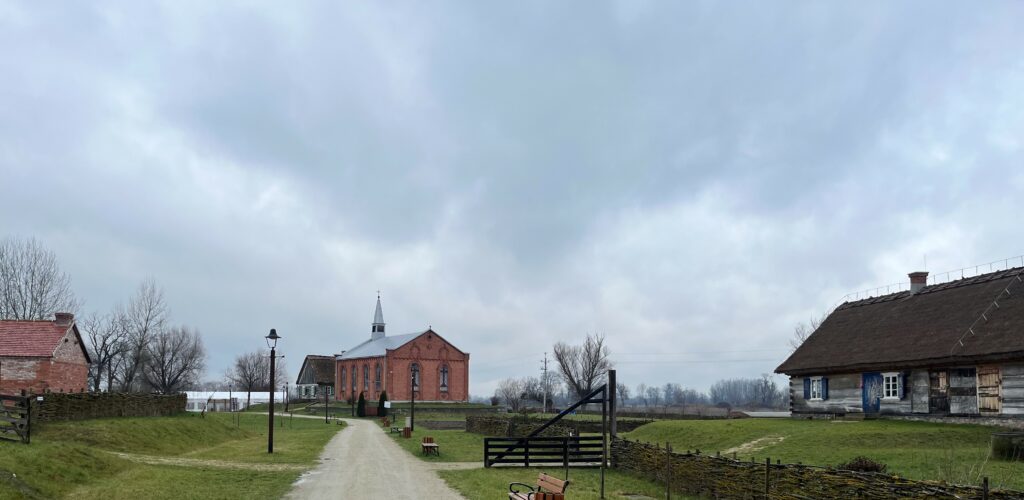2 February – World Wetlands Day 2023 in the Kampinos Vistula Valley
The occurrence of the risk of climate destabilisation means that the traditional notion of nature/wildlife has to be radically redefined. There is no return to an understanding of nature as a pre-given and sustainable background for human activities. It is no longer neutral, but takes on a political and axiological dimension.
Ewa Bińczyk, The Epoch of Man.

The signing of the Ramsar Convention 52 years ago was one of the first signs that things were going in the wrong direction. Concerns and attention were then focused on man-drained swamps and marshes. Gathered at a conference in the Caspian Sea city of Ramsar, scientists summarised the first consequences of the unbridled anthropopression implemented through large-scale modernisation projects carried out within natural water systems: the disruption of environmental balances and the disappearance of human activities and entire cultures that we would today call ‘sustainable’.
The consequences of the current global crisis, whose root cause is industrial and consumer greenhouse gas emissions, are already a catastrophic vision. Let us not forget the wetlands, however, as no issue can be isolated from this vision. The Vistula, and particularly its most valuable stretch known as the Kampinos Vistula Valley, still belongs to a shrinking family of areas of international importance for biodiversity and which still have the capacity to maintain an internal balance.
The Association is finalising work on formally submitting a fragment of the Kampinos Vistula Valley, or more precisely its section between Wyszogród and Płock, to the list of ‘Ramsar sites’, i.e. sites of international importance for the world’s natural heritage. The application will be forwarded to the General Directorate for Environmental Protection, which represents Poland at the Ramsar Convention. It has been signed by 172 countries, which have so far designated more than 2,400 areas. 19 of these are in our country.
Within the framework of popularising the Ramsar idea among the Vistula community, we have established fruitful contacts with the Mazovian Museum in Płock, which will result in the celebration of World Wetlands Day 2023 (established in 1997 on the anniversary of the Ramsar Convention) in 3 branches of this Museum, that is, in the Museum of the Middle Vistula and Wyszogród Land in Wyszogród, in the Open Air Museum of Vistula Settlement in Wiączemin Polski, and in the Granary in Płock. We will be present on 2 February in all of these places, inaugurating a photographic exhibition in the first and giving lectures in the others. Detailed information on the celebrations can be found on the website of the Mazovian Museum in Płock.
BELOW: Snapshots from Wyszogród, 29 January-2 February morning. TWBK exhibition on the occasion of World Wetlands Day 2023. Photo authors: Wojtek Holnicki, Mikołaj Grzeszczuk, Grzegorz Piaskowski. Curator of the event: Wojciech Baginski.






BELOW: Snapshots from Wiączemin Polski, 2 February, high noon. Programme: Magdalena Siemaszko, lecture ‘Let’s remember the wetlands’ ( one of the activities of the bagna.pl project); Wojciech Baginski, presentation of the Ramsar idea; discussion with representatives of the local community. Curator of the event: Magdalena Lica-Kaczan.



BELOW: Snapshots from Plock, 2 February evening. Programme: open review of nature photography by Robert Denst and Mateusz Michalski; Wojciech Baginski, presentation of the Ramsar idea. Curator of the event: Grzegorz Piaskowski.



BELOW: a poster of the Wyszogrod event.
WE WOULD LIKE TO THANK THE DIRECTORATE AND THE MANAGERS AND STAFF OF ALL THE DEPARTMENTS INVOLVED FOR THEIR OPENNESS TO THE RAMSAR IDEA, THEIR SUPPORT FOR OUR ASSOCIATION AND THEIR ACTIVE INVOLVEMENT IN THIS YEAR’S WORLD WETLANDS DAY CELEBRATIONS.

